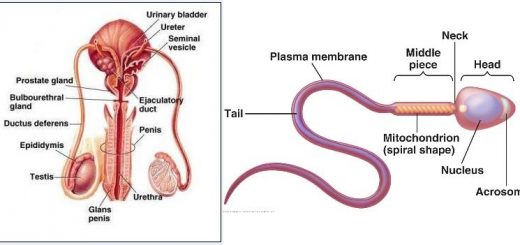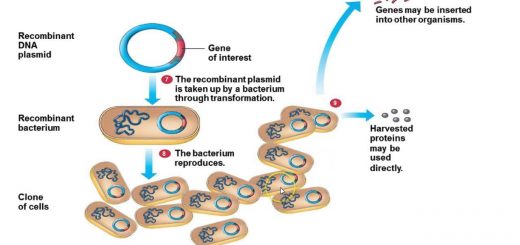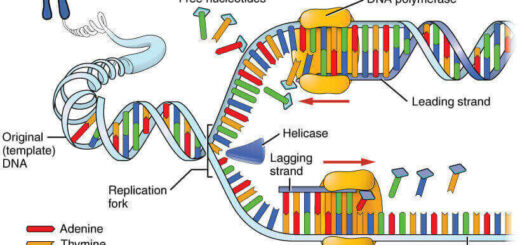Connective tissue cells types, function and structure, Resident cells and Transient cells
The CT cells are grouped into fixed (resident) cells and transient (wandering) cells, resident cells have developed and remain within the connective tissue, where they perform their functions, these fixed cells are stable, long-lived and they include: fibroblasts and fat cells. The transient cells originate in the bone marrow and they circulate in the bloodstream, upon receiving the proper stimulus or signal.
Connective tissue cells
Connective tissue cells originate from the undifferentiated mesenchymal cells while others from hemopoietic stem cells. The transient cells leave the bloodstream and migrate into the connective tissue to perform their specific functions, most of these cells are motile, short-lived and they must be replaced from a large population of stem cells, transient cells include; white blood cells and plasma cells.
Types of connective tissue cells
Undifferentiated mesenchymal cells
Histological features: they are stellate cells with few processes, they have euchromatic nuclei with faint basophilic cytoplasm.
Function: they are adult stem cells that can divide and differentiate into many types of CT cells.
Fibroblasts
Fibroblasts are the most common cells in CT.
Histological features:
- By LM, fibroblasts a spindle-shaped branching cell, with deeply basophilic cytoplasm and large euchromatic nucleus with a prominent nucleolus.
- By EM, its cytoplasm contains abundant rough endoplasmic reticulum and well-developed Golgi complex.
Function of Fibroblasts
Fibroblasts, indicated by the suffix “blast” (means “forming”), are active protein-synthesizing cells that secrete the ground substance and the fibers of the matrix. After they synthesize the matrix, they become quiescent and are called fibrocytes, they assume their less active mode, indicated by the suffix “cyte”.
Fibrocytes are smaller cells with fewer processes than fibroblasts. By LM, the cell has a small elongate, heterochromatic nucleus, and eosinophilic cytoplasm. By EM, they have fewer rER and small Golgi.
Function: maintenance of the CT matrix, however, if the matrix is injured, they can easily return to their more active state (fibroblast) to repair and regenerate the matrix.
Fat cots (adipocytes)
Histological features:
- They are large cells, spherical when a single of polyhedral in shape when they are closely-grouped.
- In unilocular adipocytes, the cytoplasm is occupied by a single large lipid droplet that pushes the cytoplasm to a thin peripheral rim with peripheral flattened nucleus giving the “signet-ring” appearance.
- The multiocular adipocytes are polygonal and smaller than the unilocular adipocytes, their cytoplasm contains a central rounded nucleus, numerous small lipid droplets, and numerous mitochondria with abundant long cristae.
Mast cells
Histological features:
- By LM, the Mast cell is a large CT cell, its cytoplasm is full of basophilic granules that may obscure the nucleus, its nucleus is rounded and central in position.
- A distinctive staining feature of mast cells is “metachromasia” which means that certain basic stains give to their granules a color other than that of the dye itself e.g. toluidine blue stain gives a purple color instead of blue, due to the chemical composition of the secretory granules.
- By EM, their cytoplasm contains numerous secretory granules.
The function of mast cells
They initiate allergic and local inflammatory responses by releasing (degranulation) of their granules which contain; the anticoagulant, heparin, and histamine which promotes increased vascular permeability and smooth muscle contraction.
White blood cells (leukocytes)
White blood cells (leukocytes) Include neutrophils, eosinophils, basophils, monocytes, and lymphocytes.
Macrophages
Macrophages are derived from the monocytes that migrate from the bloodstream into CT.
Histological features: They are large, irregular cells with an eccentric kidney-shaped nucleus, the cytoplasm shows numerous lysosomes.
Function: They are phagocytic cells; macrophages engulf a broad variety of foreign materials including bacteria, dead cells, and dust particles.
Plasma cells
Plasma cells are derived from B lymphocytes that enter the CT.
Histological features:
- By LM, they are large oval cells, with basophilic cytoplasm, the nucleus is spherical and eccentrically-placed, the chromatin of the nucleus is arranged giving the nucleus a cart-wheel appearance.
- The prominent juxtanuclear Golgi apparatus appears unstained “negative Golgl image” against the deeply-basophilic cytoplasm.
- By EM, the cytoplasm shows closely-packed cisternae of rER together with large juxtanuclear Golgi complex.
Function: they are responsible for the synthesis of antibodies against bacteria and foreign proteins penetrating into the CT.
Embryonic connective tissue, Connective tissue proper & Specialized connective tissue
Connective tissues structure, types, function, fibers & ground substances
Cell adhesion molecules, Cell junctions types, definition & function
Epithelial polarity, Apical, basal & lateral surfaces of epithelial cells
Tissues types, Epithelial tissue features, Covering & Glandular Epithelium
Supporting connective tissue, Cartilages function, structure, types & growth



